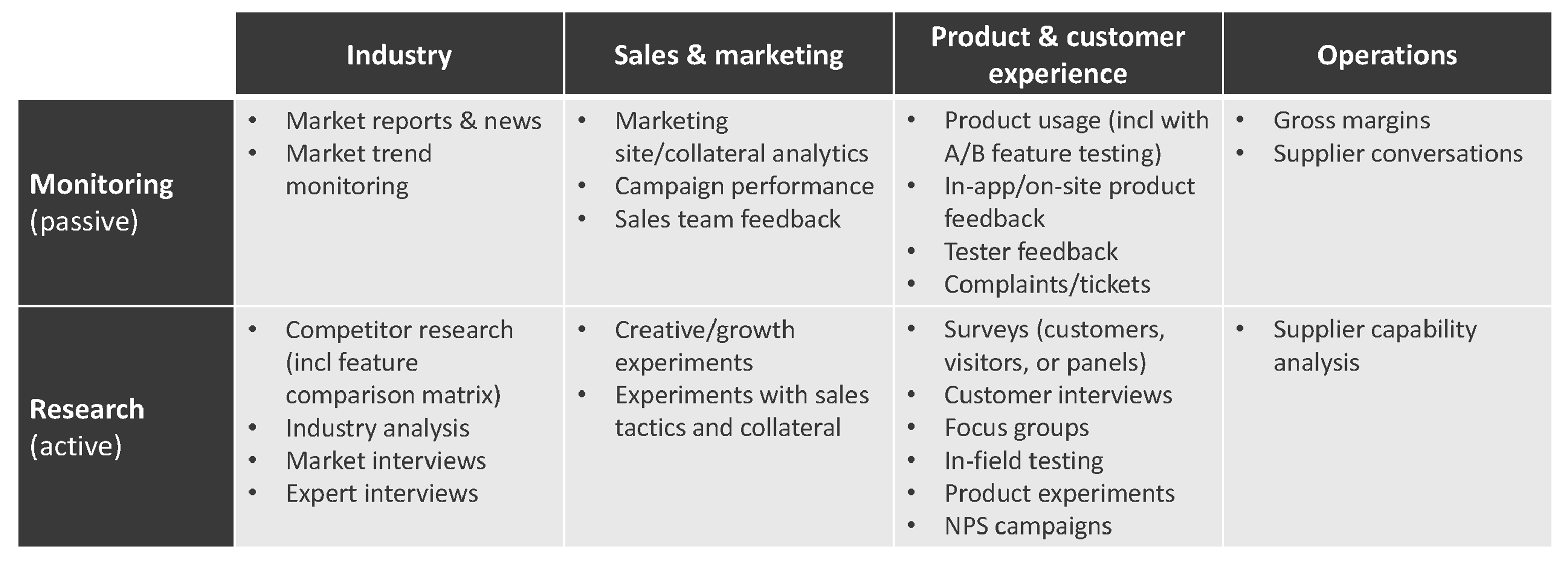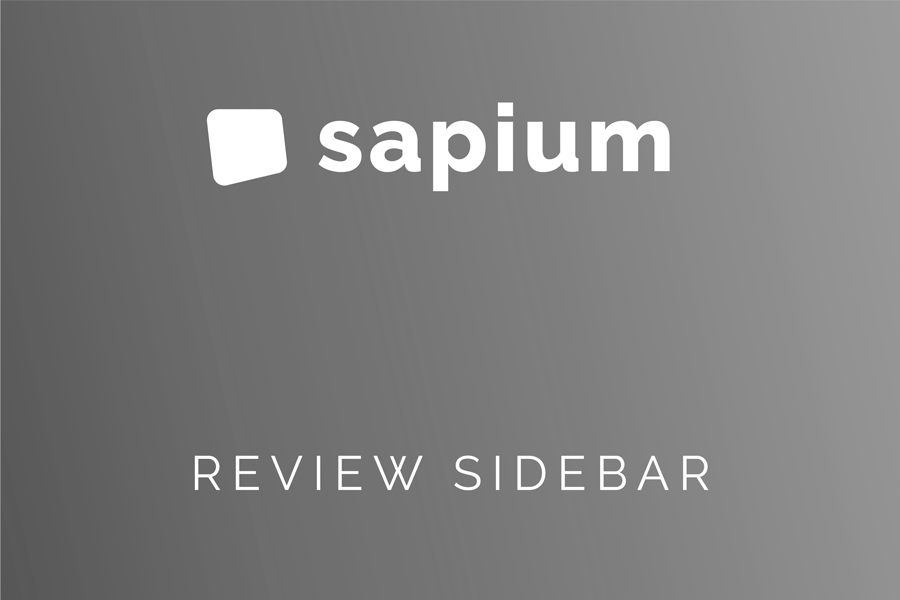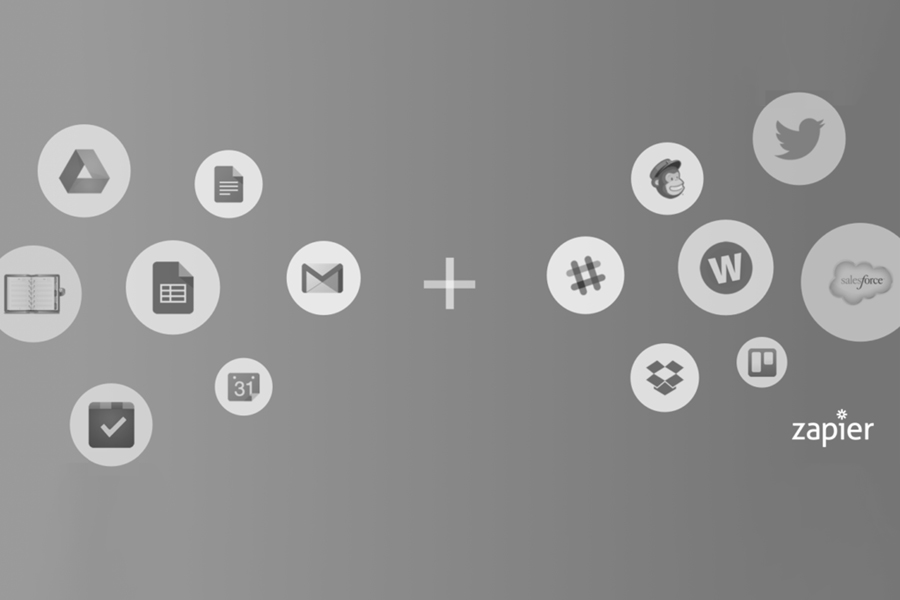In 2020, a Salesforce study found that 76% of B2B buyers expected businesses to know and understand their unique needs. And Deloitte research found that customer-centric companies are 60% more profitable. A core part of being customer-centric is ensuring that your product differentiation strategy is aligned to your customer’s needs.
This article will help you understand why customer insights are crucial to product differentiation, and highlight some of the ways to research and discover customer insights.
What is Product Differentiation?
Before we talk about customer insights, let's start with the fundamentals. What is a product?
A product is a good or service that can address a subset of a customer’s needs to a greater degree than the total cost to the customer.
You create a product because a certain set of customers have needs that you are striving to solve with it.
Of course, that product doesn’t exist in a vacuum: virtually every problem has multiple companies with products that are designed to solve it. That’s where product differentiation comes in: It describes the ways that products demonstrate and provide differing value from each other. Going back to the Apple example: Apple focuses its differentiation around having a high-quality experience—and consumers pay extra for this. Meanwhile, many Android manufacturers offer more basic handsets at a lower price. Each of these types of products attempt to address customer problems in a differentiated way.
With those definitions out of the way, let’s layer in “strategy” to complete the definition:
Product differentiation is the value of your product's features to the customer above and beyond alternatives (including the status quo), centered around the customer needs.
So what makes drives product differentiation?
The Best Products Solve Big Customer Problems
The key is in solving a customer’s biggest pain points. This could be anything from a loss of revenue, an inefficiency that costs them time and productivity, or a need for improvement of their customer experience.
A successful product differentiation strategy will be rooted in your customer knowledge at the time it is written, but it will also be a living, breathing plan. Make sure to keep your customer notes and data up to date to ensure your plan is created in an iterative fashion.
As you talk to your customers, think about what you have learned about your customers’ pain points and implement any new actionable items into your product strategy. Product differentiation is driven by customer needs, and our knowledge of customer needs is driven by customer insights.
What are Customer Insights?
Harvard Business Review defines insights as, “actionable, data-driven findings that create business value.” Customer insights, then, are findings from customers that create business value by guiding your product or service offering.
Customer insights are the backbone of your product strategy. Today, the most successful businesses know their customers inside and out, and orient the entire business toward an exceptional customer experience.
The problem is that there’s often a massive gap in perceived versus actual customer experience: Bain & Co. found that 80% of organizations believe they deliver a superior customer experience, while only 8% of their customers shared that opinion. Making sure that your product doesn’t fall into this trap of self-deception is crucial, and that’s where customer insights come into play.
The Drivers Behind Customer Needs
Customer insights are actionable findings about customers' needs. These needs are derived from their:
- Pains
- Behaviors
- Jobs
- Workflows
- Realities
Customer insights are gathered from the various types of customer interactions and research that you conduct. Throughout your process of gathering insights, taking structured notes and summarizing them is essential to accelerating your learnings.
Three Types of Customer Needs
According to some schools of thought, there are three types of customer needs to consider: functional needs, social needs, and emotional needs.
Functional needs can be broad or specific, and are related to a specific task a customer needs to complete.
Social needs are less important than functional needs, but should be considered. There might be a social pattern among your customers that can help you identify future needs.
The last category is emotional needs—this is how your customer wants to feel. This is the hardest need to capture, but if you can manage to do so, it can dramatically increase the differentiation of your product.
How Do We Gather Customer Insights?
Where do you start when it comes to discovering your customer’s needs?
To gather customer insights, you must continually collect observations (a.k.a. data about the customer), then every so often, e.g. weekly or monthly, pull up these observations to pattern-recognize and group them into themes.
Types of observation data include:
- Product feedback
- Surveys
- Customer support tickets
- Online reviews
- NPS
- Product usage & analytics
The graphic below details the various methods of how observations are collected, so you can try it for yourself. There are two main categories of data, monitoring and research. Monitoring is passive, which means an organization can find insights within existing assets and third-party data. Research is active, meaning that it requires independent research, experiments, and analysis.

Companies that are successful will leverage both Monitoring and Research to maximize their customer insights. While research requires active work, it doesn’t have to be costly or enormously time-consuming. Exercises like interviews and surveys can yield incredibly helpful insights without substantial monetary or time investment.
How Do We Identify Themes from Customer Insights?
As you capture insights, it becomes crucial to organize the data in a way that allows you to identify and unearth themes. There are a couple of principles that ensure you can identify good, helpful themes:
- Themes are patterns we’ve learned about customer behavior and need
- Themes should ideally be recent, i.e., net new knowledge
- Themes should be phrased neutrally as much as possible
- Themes should not assume features or lead the witness
- Themes should have sufficient evidence to support them (high N)
- There will only be time to discuss the most important themes (maybe 2-3)
Examples of Good Themes from Customer Insights
- “Customers appreciate when we have structured onboarding”
- “Our NPS is uncorrelated with when we send out our invoices”
Examples of Bad Themes from Customer Insights
- "Customers need us to give them a pony"— this assumes that our product should be ponies (this is leading the witness)
- One customer complaining that they “don’t get our push notifications at their nuclear bunker in Fiji” is not a theme, it is a data point
Classifying insights into themes allows you to thoroughly analyze and remove the noise from your data. By doing so, you can ensure you have a rich understanding of your customer needs. And equipped with a great understanding of their needs, you are poised to translate your findings into an effective product differentiation strategy.
Final Thoughts
Remember, the goal of your product is, quite simply, to serve your customers. Often, organizations lose sight of this reality. The most successful product teams remember this, and are constantly ensuring their offering is oriented around the customer’s needs by analyzing and grouping customer data. This approach is how you ensure that your product doesn’t become a proverbial Blockbuster to the next Netflix.
To be successful, compound your customer knowledge over time — don’t throw it out. In truth, your customers will rarely change; instead, it will be your knowledge of them that evolves and grows over time.
~~~
The best way to efficiently gather, analyze, and act on customer insights is by using software that’s built for it. With Sapeum, You can import all of your customer insight documents (from meetings, customer interviews, etc.) and quickly start adding tags to core concepts to easily unearth themes. You can also tag the data by when or how it was generated, such as adding “#Nextweek.” Once the data has been reviewed, you can filter this data in the Summary section and see all of the critical pieces of information you need to create a theme.
With or without a customer insight tool, it’s important to constantly improve your understanding of customers. To do this, ensure that you have a way of effectively tagging and sharing your notes and customer insights.
Keep in mind that the goal of a product differentiation strategy is to ensure that your product is more attractive to customers than others on the market. The single best way to stand out is to ensure that your product and its strategy take the easiest path to solving customer needs.
In short, customer insights are essential for your product differentiation strategy. They help you create a more enticing product offering to solve your customer’s needs. To gather that customer data in an efficient manner, continuously gather customer observations and put them into relevant themes. This process is how you build a product that the market needs and customers love.
Want to create a successful product differentiation strategy? Try Sapeum, a tool to generate customer insights and key actions from your meeting notes.




